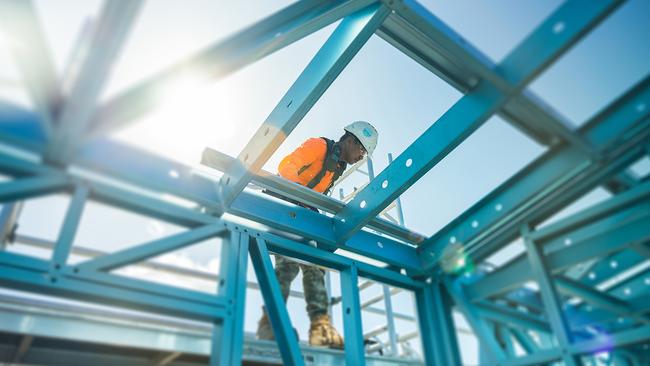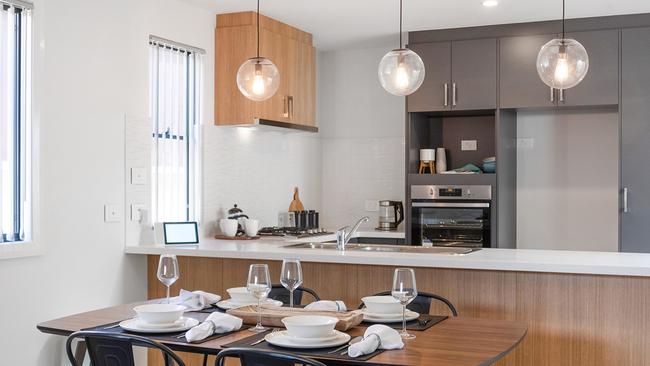Innovative solution for Australia's housing crisis
Vacancy rates are critically low and house prices continue to soar. We need a novel way of thinking to build the houses we need.

Fleetwood and The Australian have partnered to look at innovative solutions to Australia’s housing crisis.
Australia’s housing crisis is impacting all aspects of our society. With vacancy rates at an all time low and property prices skyrocketing, there is a critical need for extra housing stock now.
Without an innovative approach to sharply increase the supply of new housing, the impacts of this crisis will be felt for generations to come.
“The overall cost to society is extreme,” said Professor Wendy Stone, the academic leader of the Housing Futures Research Program and director of the Australian Housing and Urban Research Institute at Swinburne University.

She said the impact is particularly being felt by people on low and very low incomes, arguing an urgent boost to social and affordable housing is needed, as insecure housing can lead to problems such as homelessness, poor health outcomes, and even a lower birth rate.
“We’ve been under-investing as a country in the delivery and supply of social and affordable housing for decades,” explained Prof Stone.
She argued that in the immediate future, changes to policy could open up existing housing stock (to reduce homes being left empty, for example), but in the longer term we need larger policy reform.
“Secure and safe housing is a fundamental human right,” Prof Stone said.

CHALLENGES TO ACHIEVING AMBITIOUS HOUSING TARGETS
The government is acutely aware of the impact of our housing crisis and has introduced ambitious targets to meet our housing needs – aiming to build 1.2 million new homes over the next five years, including 40,000 social and affordable homes to be delivered as part of the Housing Australia Future Fund (HAFF) and the National Housing Accord Facility (NHAF).
But according to experts, there are significant hurdles that could prevent Australia from reaching these goals.
Professor Richard Tucker, co-director of HOME, a Deakin Strategic and Innovation Research Centre focused on improving housing outcomes in Australia, said those on the ground trying to reach these targets are facing a multitude of challenges.
“These include supply chain constraints, rising construction costs, and the impact of possible interest rate hikes … all of which could slow development and reduce affordability,” he said.

He said there are signs the government is looking to address the root causes of the issues and come up with solutions that could help ease the pressure on our housing.
Last year, the Federal Government established the National Housing Supply and Affordability Council, which is looking into evidence-based solutions to address the causes of this crisis.
And last November HAFF was established with an aim to increase the availability of social and affordable housing through partnerships with the private sector.
“The HAFF has been largely welcomed as a significant move towards addressing Australia's housing crisis,” Prof Tucker said, explaining the model is working towards long-term solutions and is expected to “encourage collaboration between governments, private investors and community housing providers”.
He argued Australia should be more innovative in its approach to housing and look towards international models to provide more secure housing, giving the example of Northern Europe’s “strong social sectors” and Singapore’s “innovative public housing programs”.

MODERN MODULAR HOMES AS PART OF THE SOLUTION
It’s this innovative approach that Bruce Nicholson believes is key to solving the housing crisis.
The CEO and managing director of Fleetwood, an Australian owned and operated modern modular construction company, explained solutions need to come from a number of different angles to tackle some of the biggest challenges we face, such as labour and material shortages.
“The targets Australia must meet in such a short space of time means we need every tool in the toolbox at our disposal,” Mr Nicholson said.
He said modern modular housing could be one of these tools, as homes can be built much faster, with less labour, and at a lower cost than traditional housing. A 2019 report by McKinsey found that construction time can be reduced by between 20 and 50 per cent with modern modular housing compared to regular construction, with 80 per cent of the labour taking place off site.

“Compared to other countries, modular construction is very underutilised in Australia,” Mr Nicholson said.
He said this could soon change, with more people open to how modular could be a key part of the solution. He added that working for Fleetwood, a national company, he has realised we need to have a national solution.
“We’ve been really pleased to see the momentum building around modular, and in our experience, governments across Australia are really starting to realise the opportunity modular construction presents,” he said.
“The truth is that the housing targets are a massive challenge, and we need all hands on deck to try and meet them.”
Fleetwood’s modular homes can be a key part of the solution to Australia’s housing crisis. Find out more at fleetwood.com.au


